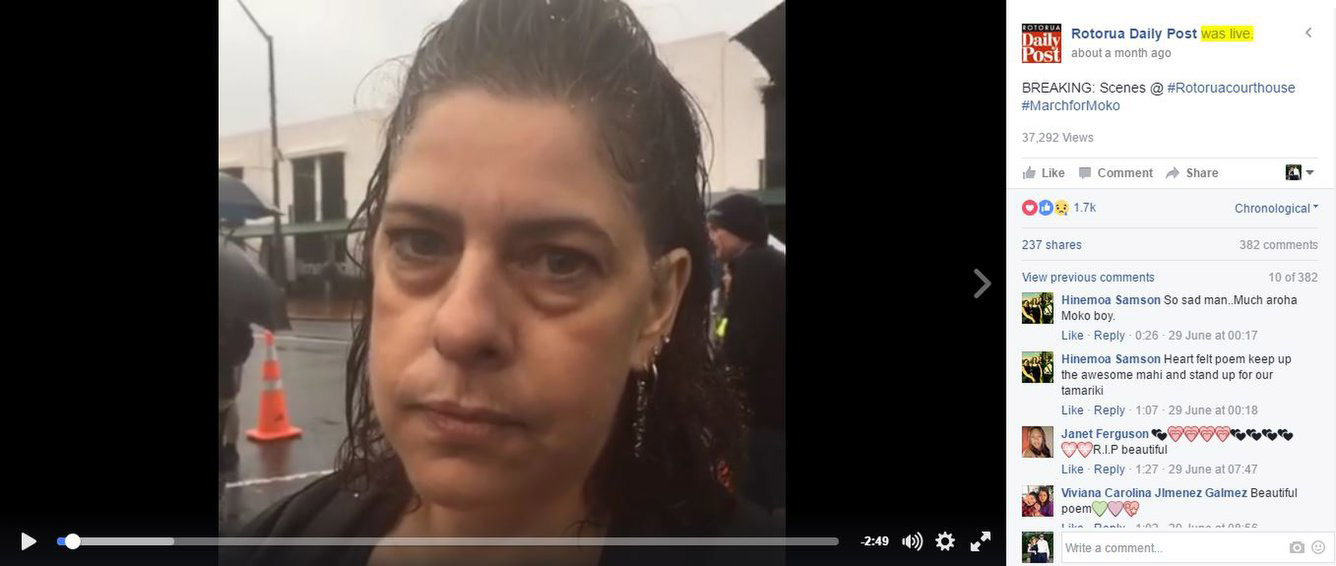
25 Jul Don’t tell me – show me
Our consultant Rebecca Savory looks at new technology being used by the media, and asks: are your communications keeping up?
Last month, as crowds of New Zealanders took to the streets to take part in the March for Moko, thousands of others watched on, as Facebook came alive with livestreamed videos from across the country.
It was June 27 and at the same time, Moko’s killers Tania Shailer and David Haerewa were standing in the dock awaiting sentencing.
Outside, any reporter with a smart phone – from nationally recognised TV personalities, to regional newspaper journalists trying it out for the first time – was broadcasting live across the country through Facebook. In the regions, hundreds were watching, and in Auckland those numbers were in the thousands.
Facebook’s livestreaming feature had just recently been launched and for the first time in New Zealand we were seeing its ability to bring a nation together online, in real time, over a major social issue.
From a news perspective, the audience couldn’t be any closer. Video has played a fundamental role in the delivery of news for a long time, but this was a raw and uncensored look at events, as they happened, delivered right to your smart phone, PC, or laptop.
Journalists were suddenly playing the role of both reporter and live social media commentator. It was a day to really revel in how far the world of news had come in the past five years, and also gave an appreciation of the power of video and social media.
So while the world of news and journalism continues to evolve from one day to the next, furiously trying to keep up with new technology and public demand – is the communications world keeping up?
When we work with clients on a news pitch, we keep the journalist front of mind. In today’s media landscape, what do they want and need in order to produce the most engaging story?
And these days, that means thinking through what video element you can pitch as well. Can you provide footage for them to embed in the online article, or is there an opportunity for livestreaming on their Facebook page at your event?
Each story and pitch is different, but our communications are no longer limited to the one-page press releases that fill media inboxes across the country.
Video should be at the forefront of our minds if we want our story to cut-through the pile of other pitches a journalist receives in a day.
Well-written content is still in – it’s just how people share and consume it that’s changing.
So remember: don’t tell me – show me.
(RS)